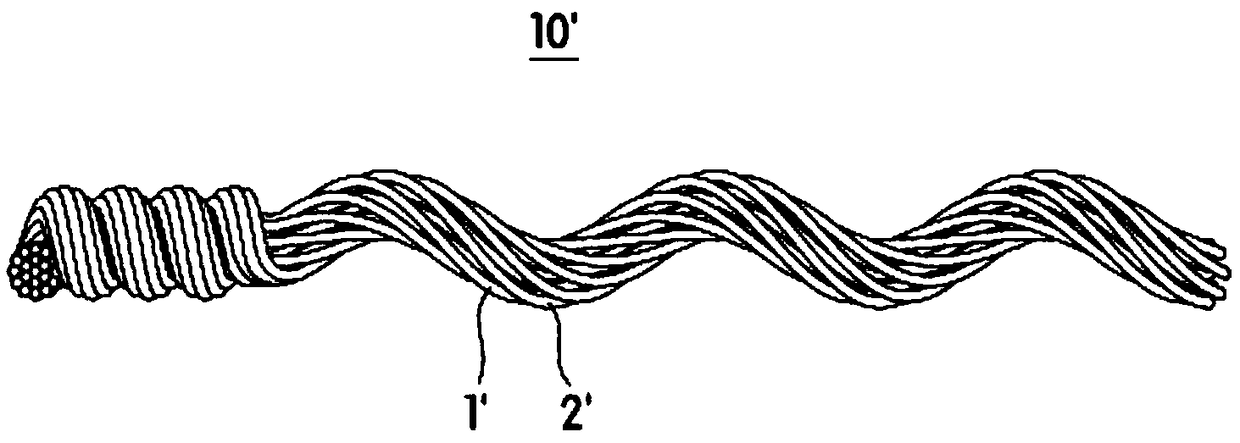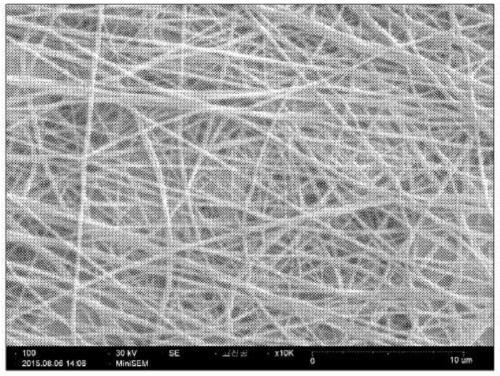Yarn for cell culture support, and fabric for cell culture support including same
A cell culture and yarn technology, applied in cell culture supports/coatings, embryonic cells, tissue culture, etc., can solve the problems of inability to cultivate three-dimensional cells, low cell survival rate, inability to cell culture, etc. Cell proliferation, increased proliferation rate, increased adhesion effect
- Summary
- Abstract
- Description
- Claims
- Application Information
AI Technical Summary
Problems solved by technology
Method used
Image
Examples
Embodiment approach
[0047] Hereinafter, embodiments of the present invention will be described in detail with reference to the accompanying drawings, so that those skilled in the art of the present invention can easily implement them. The present invention can be realized in many different forms, and is not limited to the embodiments described here. In order to clarify the present invention, parts irrelevant to the description are omitted from the drawings, and the same reference numerals are assigned to the same or similar structural elements throughout the specification.
[0048] Such as figure 1 As shown, the yarn 10 for the cell culture scaffold according to an embodiment of the present invention comprises a plurality of single yarns 1, 2, a part or all of the twisted yarns that are untwisted and formed by a plurality of single yarns that are separated from each other. Space.
[0049] In the case where the yarn is realized by twisting multiple single yarns in such a way that there is no spa...
Embodiment 1
[0079] A spinning solution was prepared by dissolving PVDF as a fiber-forming component at 15% by weight in DMAc / acetone (Acetone) as a mixed solution. Utilize the electrospinning device to electrospin the spinning solution prepared above, as the electrospinning conditions, the applied voltage is 25KV, the distance between the current collector and the spinning port is 25cm, and the discharge volume is 0.05ml / hole, at RH 65 Under the environment of %30°C, electrospinning was carried out to obtain a nanofiber web roll (Roll) with a width of 1.5m, a weight of 5g / ㎡, and a length of 500m. Figure 7 Part (a) is a photo of the prepared nanofibrous web by winding, Figure 7 Part (b) is a scanning electron micrograph showing nanofibrous webs. Such as Figure 7 As shown in part (b), the average diameter of the nanofibers forming the nanofiber web is about 230 nm.
[0080] Such as Figure 8 As shown in part (a), after slitting the roll of the prepared nanofibrous web with a width of...
experiment example
[0088] A plurality of yarns for cell scaffolds prepared in Examples and Comparative Examples were fixed side by side on a well plate for cell culture. Load 5 × 10 well plates with yarn for cell scaffolds 4 , 2.75×10 5 or 2×10 4 The mesenchymal stem cells (MSCs) were proliferated in DMEM+FBS or KBS-3 basal medium (Basalmedium) at 37°C for 4 days.
[0089] Subsequently, after staining the cultured mesenchymal stem cells (MSCs) with AP or neutral red solution (Neutral red solution), after placing them in the incubator for about 10 minutes, observe the stained cells through an inverted microscope, or add trypsin-EDTA in After being placed in the incubator for about 5 minutes, the number of cells was calculated by a blood counting chamber. Another method is to use a UV-vis spectrometer (UV-vis spectrometer) to measure the absorbance after staining with a cell counting kit 8 (CCK-8). At this time, as a control (control), a cell culture dish (cell culture dish) cultured in 2D und...
PUM
| Property | Measurement | Unit |
|---|---|---|
| width | aaaaa | aaaaa |
| diameter | aaaaa | aaaaa |
Abstract
Description
Claims
Application Information
 Login to View More
Login to View More - R&D
- Intellectual Property
- Life Sciences
- Materials
- Tech Scout
- Unparalleled Data Quality
- Higher Quality Content
- 60% Fewer Hallucinations
Browse by: Latest US Patents, China's latest patents, Technical Efficacy Thesaurus, Application Domain, Technology Topic, Popular Technical Reports.
© 2025 PatSnap. All rights reserved.Legal|Privacy policy|Modern Slavery Act Transparency Statement|Sitemap|About US| Contact US: help@patsnap.com



